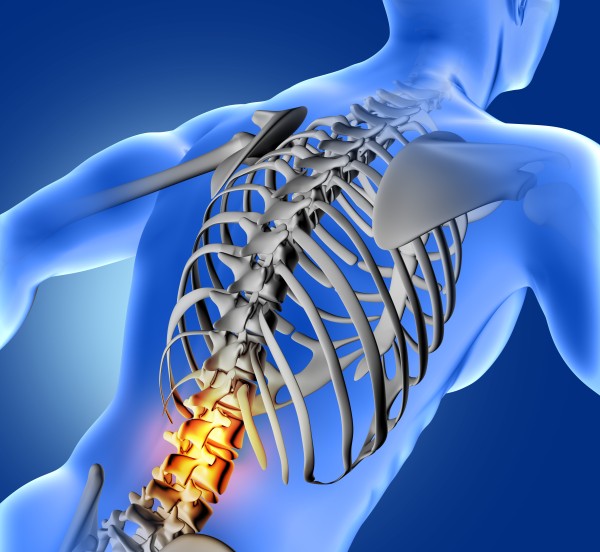A spinal fracture is a serious injury that affects the vertebrae—the bones that make up the spine. These fractures can result from trauma, such as car accidents or falls, or from underlying conditions like osteoporosis, which weakens bones. Recognizing the early signs of a spinal fracture is crucial, as timely medical intervention can prevent complications, including nerve damage, chronic pain, or permanent mobility issues.

Understanding Spinal Fractures
Spinal fractures occur when one or more vertebrae are cracked or broken. Depending on the cause and severity, these fractures can vary widely. There are several types of spinal fractures, including:
- Compression Fractures – These occur when the vertebra collapses, often due to osteoporosis or trauma. They are most common in the thoracic (mid-back) spine.
- Burst Fractures – Caused by severe trauma, such as a fall from height or car accidents, where the vertebra shatters into multiple pieces.
- Flexion-Distraction Fractures – These typically result from severe forward bending of the spine, often seen in car accidents.
- Fracture-Dislocations – The most severe type, involving displacement of vertebrae, often accompanied by nerve damage.
Recognizing the spinal fracture symptoms early can make a significant difference in recovery outcomes.
Early Signs of a Spinal Fracture
Spinal fractures can manifest differently depending on the type and location of the fracture. Common early signs include:
- Sudden back pain: Pain may be localized at the site of the fracture or radiate to other areas. Compression fractures often cause pain that worsens with standing or walking and improves when lying down.
- Limited mobility: Difficulty bending, twisting, or performing everyday movements may indicate a vertebral injury.
- Numbness or tingling: If the fracture affects the spinal cord or nerves, you may experience numbness, tingling, or weakness in the arms or legs.
- Changes in posture: Compression fractures can lead to a stooped or hunched posture, commonly referred to as kyphosis.
- Tenderness around the spine: Palpation of the affected area may reveal tenderness or swelling.
- Loss of height: Multiple compression fractures can result in a noticeable reduction in overall height over time.
It’s important to note that in some cases, especially with mild compression fractures, symptoms may be subtle and easy to overlook.
Risk Factors
Several factors increase the likelihood of sustaining a spinal fracture, including:
- Osteoporosis: Weak bones are more prone to fractures even with minor trauma.
- Age: Older adults are at higher risk due to bone density loss.
- High-impact activities: Sports, heavy lifting, or accidents can cause traumatic fractures.
- Medical conditions: Certain cancers or infections may weaken vertebrae.
When to Seek Medical Help
Immediate medical attention is necessary if you experience:
- Severe back pain after trauma
- Numbness, tingling, or weakness in limbs
- Loss of bladder or bowel control
- Visible deformity or unusual curvature of the spine
Even if symptoms are mild, anyone at risk due to osteoporosis or other conditions should consult a healthcare provider for evaluation. Early diagnosis allows for proper treatment, reducing the risk of long-term complications.
Diagnosis and Treatment
Doctors typically diagnose a spinal fracture through a combination of medical history, physical examination, and imaging studies like X-rays, CT scans, or MRIs. The treatment approach depends on the spinal fracture type and severity:
- Conservative treatment: Includes rest, pain management, physical therapy, and the use of a spinal brace for fractures to stabilize the spine.
- Spinal compression fracture therapy: Often involves medications to strengthen bones, gentle exercises to maintain mobility, and sometimes minimally invasive procedures like vertebroplasty or kyphoplasty.
- Surgical intervention: Required for severe fractures, especially those that risk spinal cord damage or involve vertebral dislocation.
Proper rehabilitation is crucial to regain strength, mobility, and prevent future fractures.
Prevention Tips
While not all fractures are preventable, certain steps can reduce risk:
- Maintain bone health with calcium and vitamin D
- Engage in weight-bearing exercises
- Avoid high-risk activities without proper safety measures
- Regularly screen for osteoporosis, especially for older adults
Recognizing the early signs of a spinal fracture and seeking timely medical care is vital to prevent long-term complications. Whether through conservative management or surgical intervention, proper treatment can restore mobility, reduce pain, and improve overall quality of life.
Understanding the types of spinal fractures, their symptoms, and treatment options equips you to act quickly and protect your spine’s health.
Frequently Asked Questions (FAQs)
Q1. What are the most common spinal fracture symptoms?
A: Common symptoms include sudden back pain, limited mobility, numbness or tingling in limbs, and changes in posture. Some fractures may also cause loss of height or spinal tenderness.
Q2. How are spinal fractures diagnosed?
A: Diagnosis usually involves a physical examination, patient history, and imaging tests such as X-rays, CT scans, or MRI scans.
Q3. What are the types of spinal fractures?
A: The main spinal fracture types include compression fractures, burst fractures, flexion-distraction fractures, and fracture-dislocations.
Q4. When should I use a spinal brace for fractures?
A: A spinal brace for fractures is recommended for stabilization during recovery, especially for compression fractures or minor vertebral injuries, as directed by a healthcare professional.
Q5. What does spinal compression fracture therapy involve?
A: It typically involves a combination of rest, pain management, physical therapy, bone-strengthening medications, and sometimes minimally invasive procedures like vertebroplasty.
Recover stronger from a spinal fracture! Visit our website https://sccplano.com/ for expert care and call us at (469) 833-2927 today to schedule your consultation.
